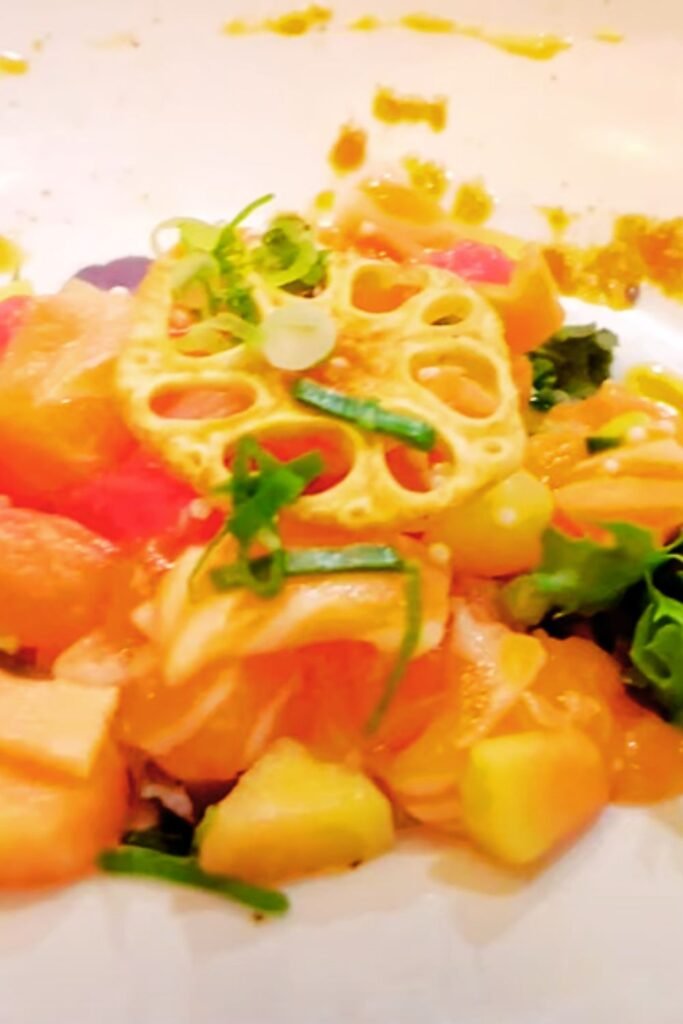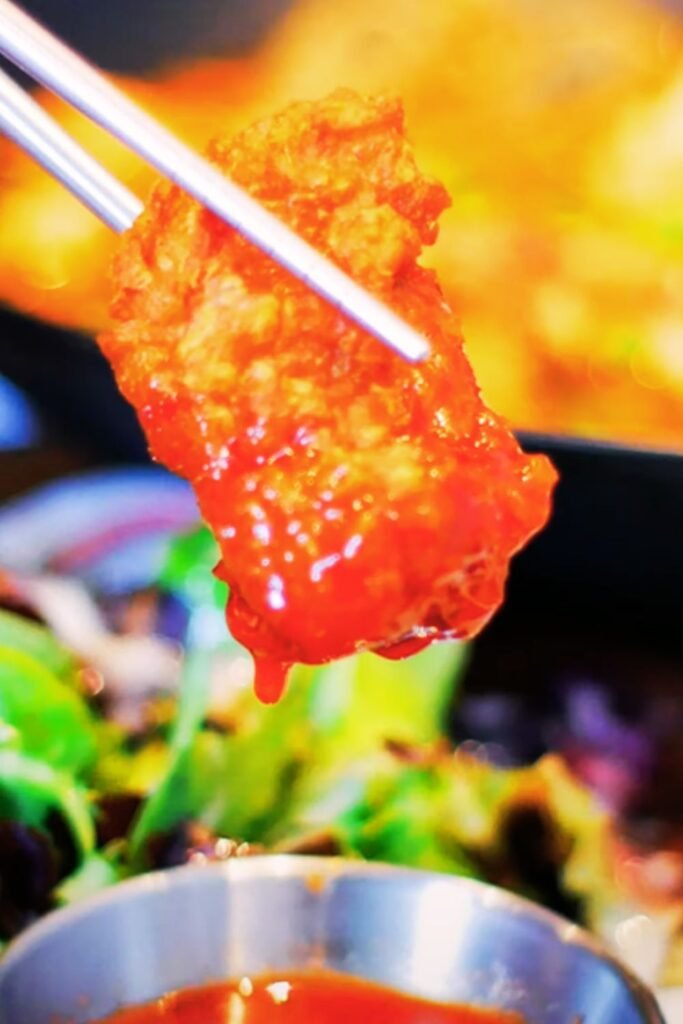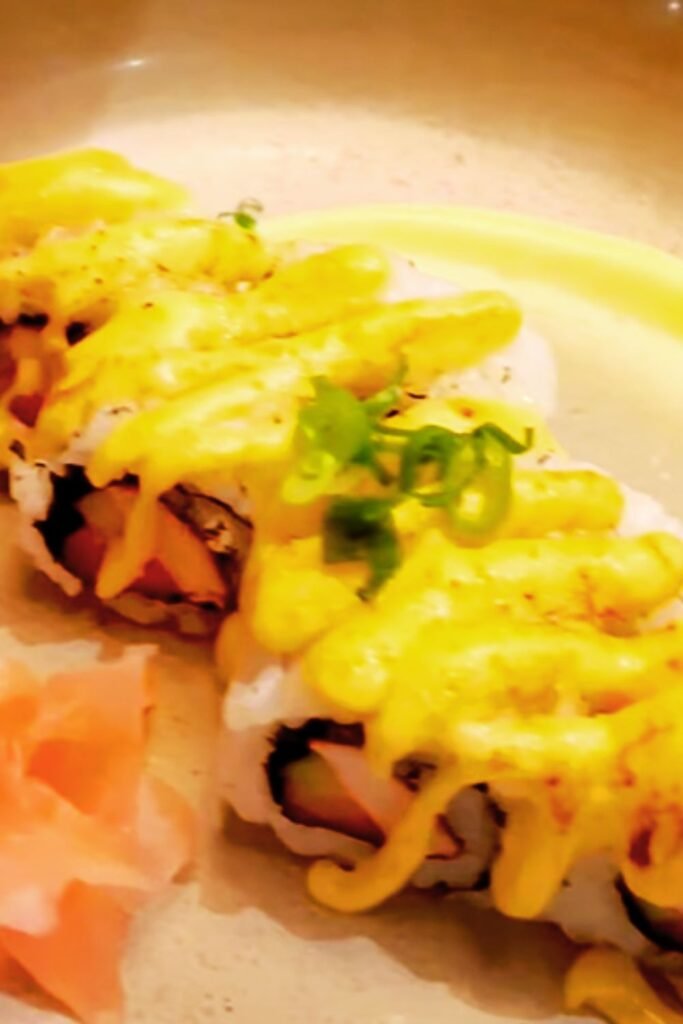In the vibrant culinary landscape of Melbourne, food isn’t merely sustenance—it’s a form of artistic expression. As someone who has spent years immersed in Melbourne’s food scene, I’ve witnessed firsthand how food styling and art direction have transformed the way we experience dining in this cosmopolitan city. The meticulous arrangement of ingredients, the thoughtful color palettes, and the strategic composition of dishes have become as important as the flavors themselves.
The Evolution of Food Styling in Melbourne
When I first entered Melbourne’s food scene a decade ago, styling was simple and straightforward. Dishes were plated traditionally, with minimal concern for visual appeal beyond basic presentation. Fast forward to today, and food styling has evolved into a sophisticated art form that combines elements of design, photography, and culinary expertise.
The Melbourne aesthetic has developed distinct characteristics that set it apart from other food capitals:
- Minimalist elegance: Clean lines and negative space that allow individual ingredients to shine
- Celebration of imperfection: Embracing natural forms and organic arrangements
- Textural contrast: Juxtaposing smooth surfaces with rough elements for visual interest
- Indigenous influence: Incorporating native ingredients and presentation styles that honor Australia’s First Nations culinary traditions
This evolution reflects Melbourne’s broader cultural transformation into a global food destination. Our restaurants don’t just serve meals; they create immersive experiences where every visual detail contributes to the story behind the dish.
Essential Tools of the Trade
My styling kit has grown considerably over the years. What started as a few basic utensils has expanded into a comprehensive collection of specialized tools. For those looking to explore food styling, here are the essentials:
| Category | Essential Tools | Purpose | Investment Level |
|---|---|---|---|
| Precision Tools | Tweezers, small scissors, eyedroppers | Minute adjustments and precise placement | Low-Medium |
| Surface Materials | Marble slabs, ceramic tiles, wooden boards | Creating diverse background textures | Medium |
| Fabrics | Linen napkins, cheesecloth, microfiber cloths | Adding texture and absorbing excess moisture | Low |
| Kitchen Basics | Small offset spatulas, brushes, spray bottles | Controlled application of sauces and oils | Low |
| Photography | Reflectors, diffusers, portable lights | Manipulating light conditions | Medium-High |
| Specialized Items | Glycerin (for “freshness”), food-safe lacquer | Creating longevity in styled foods | Medium |
I’ve learned that quality matters with these tools. My best tweezers—an investment that seemed excessive at the time—have lasted eight years and allowed for precision that cheaper alternatives simply couldn’t match.
Styling Techniques for Different Cuisine Types
Different cuisines require different styling approaches. Through my work with various Melbourne restaurants, I’ve developed specialized techniques for presenting diverse food traditions:
Modern Australian
Modern Australian cuisine presents a unique styling challenge because it draws influence from so many cultures. When I style modern Australian dishes, I focus on:
- Creating height and architectural elements
- Incorporating negative space to highlight fusion elements
- Using native ingredients as visual focal points
- Applying micro herbs and edible flowers strategically, not gratuitously
A signature Melbourne approach involves what I call “controlled chaos”—arrangements that appear effortless but require meticulous attention to detail.

Asian Fusion
Melbourne’s Asian fusion restaurants have pioneered innovative presentation styles that honor traditional techniques while introducing contemporary elements:
- Asymmetrical plating that guides the eye across the dish
- Dramatic color contrasts that emphasize fresh ingredients
- Strategic use of traditional vessels reimagined in modern contexts
- Textural elements that add dimension and invite tactile engagement
One technique I’ve refined is using traditional Asian serving pieces but arranging food in non-traditional ways, creating a visual tension that reflects the fusion nature of the cuisine.
Mediterranean Influences
For Mediterranean-inspired styling, I emphasize:
- Family-style arrangements that encourage sharing
- Rustic elements that convey authenticity and tradition
- Rich, warm color palettes that evoke Mediterranean landscapes
- Strategically placed herbs and olive oil drizzles for visual freshness
The key with Mediterranean styling is to make dishes appear abundant and generous without looking cluttered or overwhelming.
Color Theory in Food Presentation
Understanding color theory has transformed my approach to food styling. The strategic use of color can make or break a dish’s visual appeal. Here’s how I apply color theory principles:
Complementary Colors
Pairing colors from opposite sides of the color wheel creates vibrant contrast. I often place:
- Purple roasted beetroot against yellow turmeric sauce
- Green herbs against red tomato-based dishes
- Orange carrots or sweet potatoes against blue serving pieces
Analogous Colors
Using colors adjacent on the color wheel creates harmony and cohesion. This works beautifully for:
- Various shades of green in herb-forward dishes
- Gradients of yellow to red in autumn vegetable presentations
- Tonal variations of whites and creams in delicate desserts
Monochromatic Approaches
Sometimes the most striking presentations focus on variations of a single color:
- Multiple textures of white (cauliflower, white beans, tofu) with subtle ivory and cream accents
- Diverse green elements (avocado, cucumber, pistachios, herbs) presented in layers
- Various red components (tomatoes, strawberries, radishes) arranged for textural contrast
The Melbourne food scene has embraced color theory with particular sophistication, moving beyond obvious pairings to subtle, unexpected combinations that challenge diners’ expectations.
Lighting Techniques for Food Photography
The right lighting transforms good food styling into exceptional food photography. Through collaborating with photographers, I’ve learned that lighting is perhaps the most crucial element in showcasing styled food.
In Melbourne’s restaurant scene, I’ve observed three predominant lighting approaches:
- Natural side lighting: Positioning dishes near windows to capture soft, directional light that creates gentle shadows and highlights textures
- Overhead dramatic lighting: Using controlled artificial lighting from above to create striking shadows that add drama and dimension
- Diffused ambient lighting: Employing multiple light sources with diffusers to eliminate harsh shadows, ideal for glossy or reflective foods
The lighting trend in Melbourne has evolved from the dark, moody images of the mid-2010s to a brighter, more airy aesthetic that emphasizes freshness and accessibility.
The Psychology Behind Food Styling
Effective food styling triggers specific psychological and emotional responses. Understanding these connections has allowed me to create more impactful presentations:
- Nostalgia: Styling that evokes childhood memories through familiar presentations with subtle contemporary twists
- Luxury: Creating perception of exclusivity through negative space, height, and minimal but perfect garnishes
- Comfort: Styling that suggests abundance, accessibility, and tactile appeal
- Adventure: Presentations that introduce unfamiliar elements in approachable ways
I’ve noticed that Melbourne diners respond particularly well to styling that tells a story about ingredients’ origins or preparation methods. Visual cues that communicate sustainability, locality, or traditional preparation techniques resonate strongly with our environmentally and culturally conscious dining community.

Seasonal Styling Approaches
Melbourne’s distinct seasons provide natural styling inspiration. I adapt my approach throughout the year:
Winter Styling
In winter, I focus on:
- Deep, rich colors that convey warmth
- Textural elements that add visual interest to heartier dishes
- Height and layering to create substantive presentations
- Strategic steam capture for photography (a technical challenge requiring precise timing)
Spring Revival
Spring styling shifts to:
- Bright, fresh colors emphasizing new growth
- Delicate edible flowers and microgreens as focal points
- Lighter plating styles with more negative space
- Natural materials like stone and wood to ground the fresh elements
Summer Abundance
Summer presents opportunities for:
- Vibrant color contrasts that reflect seasonal produce
- Creative use of negative space to convey lightness
- Raw elements that showcase freshness
- Strategic use of height to create visual interest without heaviness
Autumn Transitions
Autumn styling incorporates:
- Warm color palettes reflecting changing foliage
- Textural contrasts between soft and crisp elements
- Rustic presentation styles that convey comfort
- Strategic use of height and layering to create dimension
In Melbourne’s relatively mild climate, seasonal styling is less about extreme adaptation and more about subtle shifts that acknowledge seasonal changes while maintaining consistent brand aesthetics.
Working with Challenging Foods
Some ingredients present particular styling challenges. Through trial and error, I’ve developed specific techniques for problematic foods:
| Challenging Food | Common Issues | Styling Solutions |
|---|---|---|
| Ice Cream | Melting quickly under lights | Work with frozen ceramic dishes; use stabilized formulations; employ stand-ins for testing |
| Green Salads | Wilting, browning edges | Water bath for roots; citrus spritz; style immediately before shooting |
| Soups | Sinking garnishes, unappetizing surface | Use thickened base; strategic “supports” beneath surface; careful temperature control |
| Burgers | Collapsing, ingredients sliding | Strategic skewering; slightly undercook for structure; build from back to front |
| Pasta | Drying out, absorbing sauce | Undercook slightly; use reserved pasta water for shine; refresh with oil between shots |
The most important lesson I’ve learned is to prepare extensively before styling begins. Having multiple versions of the same ingredient at different cooking stages gives me flexibility to adapt as the styling session progresses.
Styling for Different Platforms
The platform where images will appear significantly impacts styling decisions. I adjust my approach based on the final destination:
Social Media Styling
For Instagram and other social platforms, I prioritize:
- Bold, scroll-stopping visual moments
- Distinctive color stories that stand out in crowded feeds
- Interactive elements that suggest texture and invite engagement
- Styling that looks good at small sizes on mobile devices
Editorial Styling
For magazine and cookbook work, my focus shifts to:
- More sophisticated, subtle styling that rewards closer examination
- Narrative-driven presentations that support written content
- Styling that works within the publication’s established visual language
- Techniques that translate effectively to print (considering paper types and printing methods)
Menu and Marketing Materials
When styling for menus and promotional materials, I emphasize:
- Accuracy in representing what customers will actually receive
- Styling that communicates key selling points visually
- Consistency with brand identity and positioning
- Compositions that accommodate text overlay if needed
Understanding these distinctions has been crucial to creating effective styling for Melbourne’s diverse food businesses.

Styling on a Budget
Not every project comes with a generous budget. I’ve developed strategies for creating impressive styling without significant investment:
- Thrift natural materials: Source second-hand ceramics, linens, and props from op shops and markets
- Create custom backgrounds: Use painted boards, tile samples, or textured papers instead of expensive surfaces
- Invest strategically: Put money into versatile items that can be used across multiple styles
- Embrace minimalism: Sometimes the most elegant solutions involve fewer elements, not more
- DIY tools: Create custom tools from everyday items (modified paintbrushes, repurposed medical supplies)
Some of my most successful projects have emerged from budget constraints that forced creative problem-solving. Melbourne’s food scene values authenticity and creativity over lavish budgets, which has fostered innovative approaches to styling.
Ethical Considerations in Food Styling
As my career has evolved, I’ve become increasingly conscious of ethical issues in food styling:
- Food waste: Planning shoots to minimize waste; donating unused ingredients; composting unavoidable waste
- Authenticity: Honestly representing dishes without misleading consumers
- Cultural respect: Researching cultural significance of presentation styles before adapting them
- Sustainability: Choosing reusable props and tools; avoiding environmentally harmful products
The Melbourne food community increasingly values ethical practices, and I’ve found that transparency about styling techniques builds trust with clients and their audiences.
Serving Suggestions and Presentation Ideas
For those looking to elevate their own food presentation, here are some approachable techniques from Melbourne’s styling scene:
For Home Entertaining
- Use height strategically: Stack elements or place components at different levels to create visual interest
- Embrace negative space: Don’t feel compelled to fill the entire plate
- Select a cohesive color story across different dishes in a meal
- Invest in neutral, versatile serving pieces that complement rather than compete with food
- Consider temperature contrast: pairing warm dishes with cool elements creates visual and palate interest
For Cafés and Restaurants
- Develop a signature plating style that becomes part of brand recognition
- Create Instagram-worthy moments within dishes without compromising practicality
- Consider the dining environment when styling: what works in bright daylight might not translate to evening settings
- Use garnishes purposefully, not as an afterthought
- Test plated dishes from multiple angles to ensure they look good from wherever the diner sits
Beverage Styling
Non-alcoholic beverage styling has become particularly important in Melbourne’s café culture:
- Layer ingredients for visual interest in transparent glasses
- Use herbs and edible flowers as functional garnishes that add aroma and flavor
- Consider the glass or cup as part of the presentation, not just a vessel
- Create temperature contrast with condensation or steam as visual elements
- Use natural elements like citrus wheels or cucumber ribbons strategically
Q&A: Common Food Styling Questions
Based on the questions I’m most frequently asked:
Q: How do you keep food looking fresh during long photo shoots? A: Preparation is key. I always have multiple versions of the same dish at different stages of completion. For particularly delicate items, I use stand-ins for composition and lighting setup, then swap in the final version for actual shooting. Keep greens in ice water until the last moment, use a small spray bottle with water for refreshing, and have heat sources available for steam effects when needed.
Q: What’s the biggest mistake amateur food stylists make? A: Overcomplicating the presentation. Many beginners try to incorporate too many elements or techniques at once. The most successful styling often focuses on doing one or two things exceptionally well rather than attempting everything. Start with a clear concept of what story you want the food to tell, then eliminate anything that doesn’t serve that narrative.
Q: How important is the choice of plates and serving vessels? A: Extremely important—they’re essentially the “frame” for your food art. I recommend investing in high-quality, versatile pieces in neutral tones as your foundation. The vessel should complement the food without competing for attention. In Melbourne, handmade ceramics from local artisans have become particularly popular because they add texture and character while supporting local craft traditions.
Q: Do you use artificial products to enhance food appearance? A: I prefer to avoid non-edible styling products whenever possible. Modern food photography has moved away from the tricks of the past (motor oil for syrup, shaving cream for whipped cream, etc.) toward more authentic representation. That said, I do use natural enhancers like a light brush of oil to refresh surfaces or a targeted spritz of water for freshness. The goal is to make food look its realistic best, not to create a deceptive image.
Q: How do you style messy foods like burgers or ice cream sundaes? A: Controlled mess is actually carefully constructed! For items like burgers, I build them from the back to the front (from the camera’s perspective), securing layers with strategic skewers when necessary. For ice cream, I work quickly with pre-frozen scoops and dishes. The key is to make deliberate styling decisions that appear spontaneous—what I call “intentional casualness.” This approach is particularly valued in Melbourne’s relaxed but sophisticated food culture.
The Future of Food Styling in Melbourne
As I look to the future, several emerging trends are shaping Melbourne’s food styling landscape:
Sustainability Focus
Environmental consciousness is increasingly influencing styling decisions:
- Reduced prop inventories focusing on versatile, timeless pieces
- Emphasis on biodegradable or reusable styling tools
- Growing preference for styling that highlights sustainable ingredients and practices
- Transparent communication about styling processes
Technology Integration
New technologies are expanding creative possibilities:
- Motion styling for video content becoming as important as still photography
- Augmented reality applications creating interactive dining experiences
- 3D food printing enabling previously impossible structural elements
- Lighting innovations that reduce energy use while improving results
Cultural Authenticity
There’s growing emphasis on culturally respectful representation:
- Deeper research into traditional presentation methods
- Collaboration with cultural consultants on relevant projects
- Movement away from fusion styling that appropriates without understanding
- Celebration of diverse cultural influences that have shaped Melbourne’s food identity
Interactive Elements
Styling increasingly considers how diners interact with food:
- Presentations designed to be partially completed at the table
- Styled elements that transform as they’re consumed (melting, mixing, revealing)
- Consideration of how dishes will be shared on social media by consumers
- Multi-sensory presentations that incorporate sound, scent, and texture
These emerging trends reflect Melbourne’s position at the intersection of tradition and innovation—a city that honors culinary heritage while constantly pushing creative boundaries.
Conclusion
Food styling in Melbourne has evolved from an afterthought to an essential element of culinary expression. As both a practical craft and an artistic pursuit, it transforms eating from a merely nutritional experience into a multisensory journey. The distinctive Melbourne approach—balancing sophistication with accessibility, tradition with innovation—has earned international recognition and influenced food presentation worldwide.
For those inspired to explore food styling, remember that technical skills matter, but observation and intentionality matter more. The most compelling food presentations tell stories, evoke emotions, and create connections. Whether you’re a professional stylist, a chef, or simply someone who enjoys presenting beautiful food at home, approaching styling with curiosity and purpose will elevate your creations.
As Melbourne’s food scene continues to evolve, so too will the art of food styling—adapting to new technologies, embracing diverse cultural influences, and responding to changing social values. What remains constant is the fundamental human pleasure in food that delights all the senses, beginning with what we see.